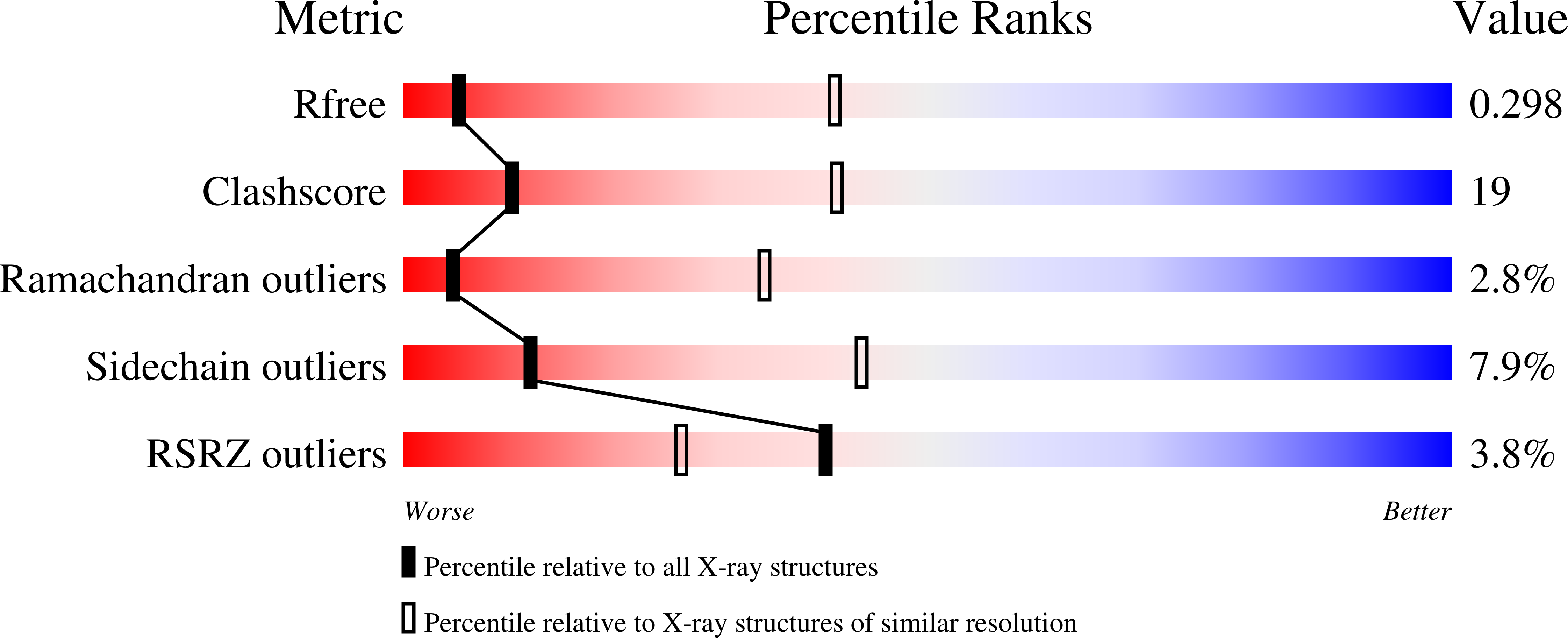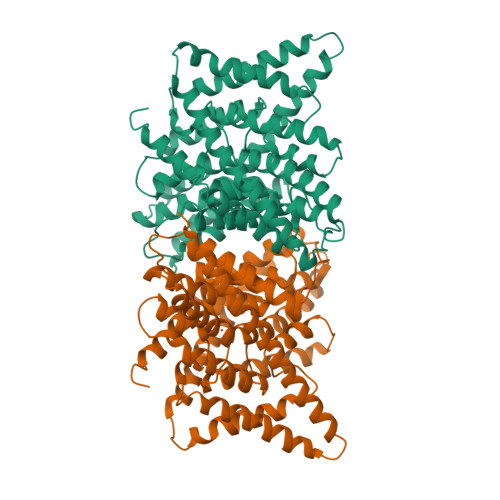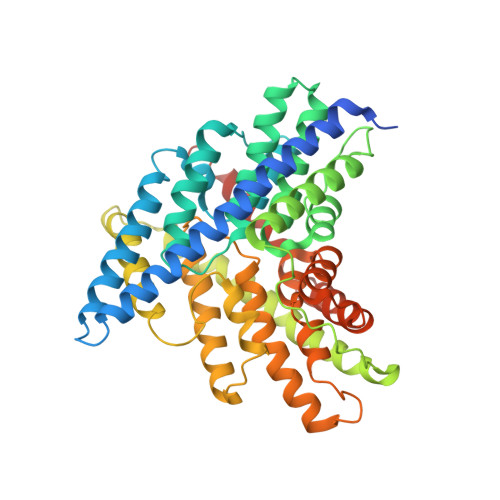Structure of a Slow CLC Cl(-)/H(+) Antiporter from a Cyanobacterium.
Jayaram, H., Robertson, J.L., Wu, F., Williams, C., Miller, C.(2011) Biochemistry 50: 788-794
- PubMed: 21174448
- DOI: https://doi.org/10.1021/bi1019258
- Primary Citation of Related Structures:
3ND0, 3Q17 - PubMed Abstract:
X-ray crystal structures have been previously determined for three CLC-type transporter homologues, but the absolute unitary transport rate is known for only one of these. The Escherichia coli Cl(-)/H(+) antiporter (EC) moves ∼2000 Cl(-) ions/s, an exceptionally high rate among membrane-transport proteins. It is not known whether such rapid turnover is characteristic of ClCs in general or if the E. coli homologue represents a functional outlier. Here, we characterize a CLC Cl(-)/H(+) antiporter from the cyanobacterium Synechocystis sp. PCC6803 (SY) and determine its crystal structure at 3.2 Å resolution. The structure of SY is nearly identical to that of EC, with all residues involved in Cl(-) binding and proton coupling structurally similar to their equivalents in EC. SY actively pumps protons into liposomes against a gradient and moves Cl(-) at ∼20 s(-1), 1% of the EC rate. Electrostatic calculations, used to identify residues contributing to ion binding energetics in SY and EC, highlight two residues flanking the external binding site that are destabilizing for Cl(-) binding in SY and stabilizing in EC. Mutation of these two residues in SY to their counterparts in EC accelerates transport to ∼150 s(-1), allowing measurement of Cl(-)/H(+) stoichiometry of 2/1. SY thus shares a similar structure and a common transport mechanism to EC, but it is by comparison slow, a result that refutes the idea that the transport mechanism of CLCs leads to intrinsically high rates.
Organizational Affiliation:
Department of Biochemistry, Howard Hughes Medical Institute, Brandeis University, Waltham, Massachusetts 02454, United States.

















